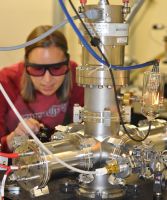
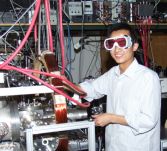
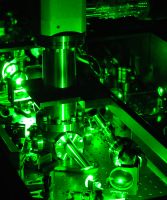
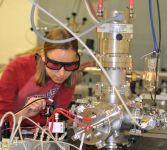
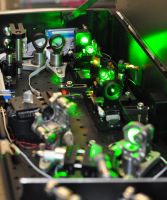
Student Success
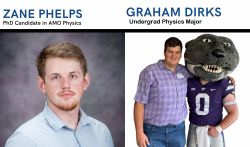
Two K-State Physics students have received awards from the U.S. Department of Energy (DOE). Graham Dirks, undergraduate in Physics, has been granted a Science Undergraduate Laboratory Internship (SULI) from the SLAC National Accelerator Laboratory. Zane Phelps, graduate PhD candidate with the JRM Lab, has been named an outstanding U.S. doctoral student by the Department of Energy Office of Science Graduate Research Program.
The SULI Program is sponsored by the DOE Office of Science's Office of Workforce Development for Teachers and Scientists (WDTS). The summer program at SLAC will be in-person and runs for 10 weeks. During the internship, each student works with a scientist or engineer on a project related to the Laboratory’s research program. At the conclusion of the internship, the student writes a research paper and makes a brief presentation on his or her project.
The DOE Office of Science has selected 79 outstanding U.S. doctoral students from 56 universities and 29 states for the prestigious Office of Science Graduate Student Research (SCGSR) program. SCGSR prepares doctoral candidates for careers of critical importance to the Office of Science’s mission of transforming our understanding of nature and advancing the energy, economic, and national security of the United States. Participants receive world-class training and access to state-of-the-art facilities, expertise, and resources at DOE's national laboratories.
Recently Published Papers:
-
Attosecond control and measurement of chiral photoionization dynamics"
Meng Han, Jia-Bao Ji, Alexander Blech, R. Esteban Goetz, Corbin Allison, Loren Greenman, Christiane P. Koch, Hans Jakob Wörner
Nature 645, 95 (2025) -
Imaging collective quantum fluctuations of the structure of a complex molecule
Benoit Richard, Xiang Li, Daniel Rolles, Artem Rudenko, et al.
Science 389, 650 (2025)
See the accompanying European XFEL press release & video.
This Week at JRM
Week of 21 December 2025
| Happy Holidays! | ||
| Mon | ||
| Tue | ||
| Wed | ||
| Thu | Christmas | |
| Fri | ||
What's New?
Daniel Rolles, professor in atomic, molecular, and optical physics, has been selected as a 2024 Fellow of the American Physical Society for pioneering experiments on imaging ultrafast molecular reactions with XUV and X-ray free-electron lasers, and for advancing our understanding of the interaction of ultra-intense X-ray pulses with atoms and molecules.
